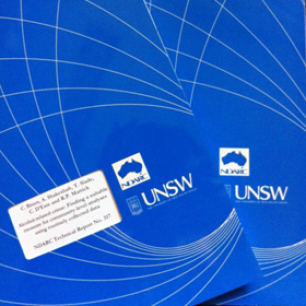NDARC Technical Report No. 167 (2003)
EXECUTIVE SUMMARY
Introduction
This report has been prepared in order to provide a contextual background describing the heroin markets of the world, and Australia in particular. It covers opium cultivation, heroin production and the trafficking of heroin from the different opium cultivation areas to the final market destinations. In Australia, the history of both opium and heroin consumption and supply are detailed from the first instances of opium smoking in the country to the diverse heroin markets of the 1990s in Sydney and Melbourne.
Global heroin markets
Opium cultivation
Opium has been grown over large areas of Asia for many centuries. Afghanistan, in South West Asia has been the world’s largest opium producer for the last decade; followed by Myanmar, in South East Asia. Other opium-cultivation areas such as the People’s Democratic Republic (PDR) of Lao, Central and Southern America produce relatively little in comparison. In 2001, Afghanistan experienced a 94% reduction in opium output due to political disturbances in the country. In 2002, opium cultivation returned to pre-2001 levels, with Afghanistan producing 76% and Myanmar producing 18% of world opium. Opium cultivation in the South East Asian area has decreased steadily since the mid-1990s.
Opiate trafficking
Based on opiate seizure data, trafficking routes from Afghanistan pass through Iran, the Balkans, Pakistan and Central Asia to Europe. In recent years, traffic on the Central Asian route and through the countries of Eastern Europe appears to have increased.
There are many different trafficking routes from Myanmar through Asian, and these pass through Malaysia, Singapore, Hong Kong, Thailand, Vietnam, Sri Lanka, India, and China. These trafficking routes have also changed over time, and there has been an increased level of traffic through Southern China, down the Mekong River, and through the Andaman Sea along the Southern Myanmar coastline.
Heroin supply
For the last decade, the West European heroin market has been primarily supplied by South West Asian heroin, whereas the Australian and Canadian markets receive the majority of their heroin from South East Asia. In the early 1990s, the United States was supplied by South East Asian heroin, but this changed from 1994 when South East Asian supply was disrupted. Heroin producers from Columbia took over to become America’s main source of heroin supply.
Opium and heroin prices
Opium prices at the point of cultivation (farm-gate prices) are directly related to the size of the harvest. The farm-gate price for Afghanistan heroin soared in 2001 wheras farm-gate prices in Myanmar and Lao PDR have remained relatively consistent since the mid-1980s.
Wholesale heroin prices in the heroin markets of Western Europe and the United States have steadily decreased over the last decade, and the increase in farm-gate prices in Afghanistan was not reflected in price increases in Western Europe. The Canadian market experienced no obvious changes in heroin prices, unlike the Australian market, which experienced increases in price during 2001.
Australian heroin markets
History of Australian heroin markets
Australia had extensive use of quasi-medical use of opiates in the 19th century. Progressive restrictions on the access to opiates began in the 1890s and continued until heroin was prohibited in the mid 1950s.
There was a large scale illicit cocaine market in 1920s and 1930s but, with the exception of some limited heroin use among the Sydney Chinese community in the late 1950s, illicit heroin use largely began in Australia in the early to mid 1960s when it was introduced by American servicemen on R & R leave.
The size of the illicit heroin market increased after the end of the Vietnam War with the development of organised heroin trafficking between Australia and South East Asia, as criminals who had previously derived their incomes from prostitution and gambling moved into drug importation. The heroin market was also allowed to grow further due to continued police protection established during policing of more traditional criminal activities of gambling and prostitution. During the mid-1980s, increases in the number of heroin users lead to the creation of the National Campaign Against Drug Abuse.
Australian heroin markets in the 1990s
The increased availability, decreased price and increasing quality of heroin in the mid-1990s were all indicators of an expanding heroin market, and were accompanied by a steep rise in heroin overdose deaths. This was the state of Australian heroin markets in 1999; the year before the first reports commenced that heroin had suddenly become very difficult for experienced heroin users to find.
Citation: Gibson, A., Degenhardt, L., Topp, L., Day, C., Hall, W., Dietze, P. and McKetin, R. (2003) Global and Australian heroin markets, Sydney: National Drug and Alcohol Research Centre.


